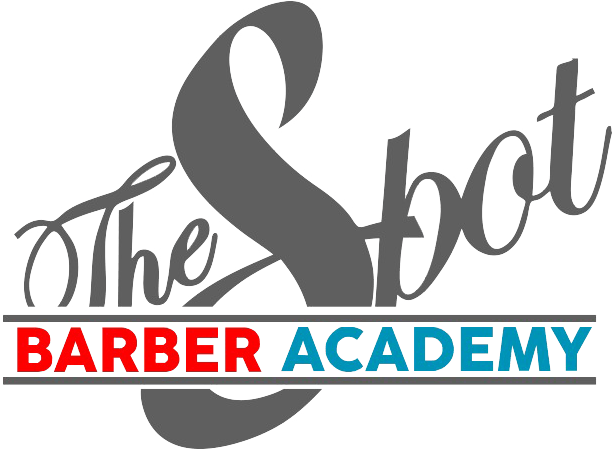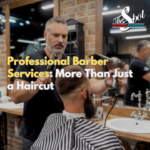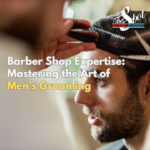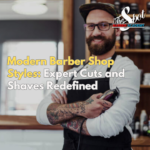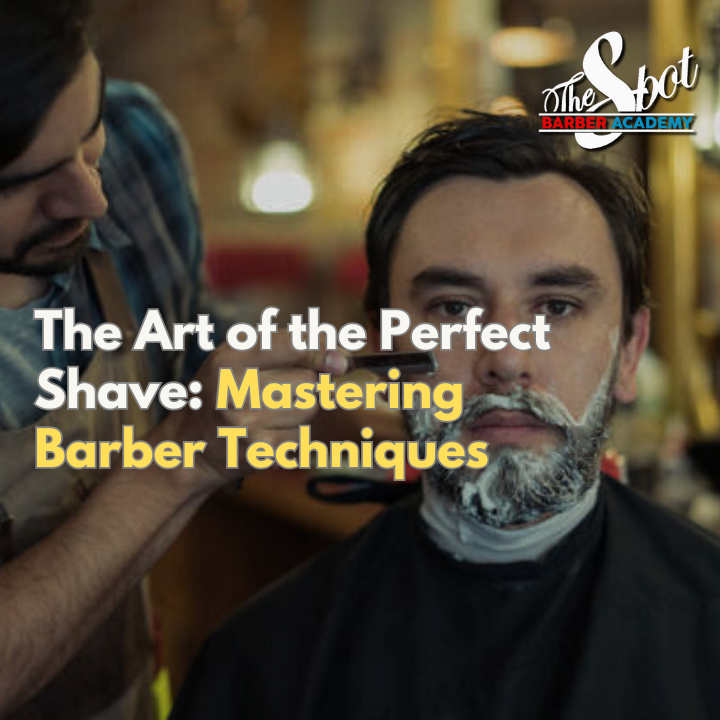Mastering Barber Shaving Techniques
Shaving is an art, a ritual that has been practiced for centuries across different cultures and continents. In today’s fast-paced world, the art of the perfect shave remains a cornerstone of men’s grooming. At The Spot Barber Academy, we believe that mastering barber shaving techniques is not just about aesthetics; it’s about tradition, skill, and the personal touch that transforms a simple shave into an experience.[/vc_column_text]
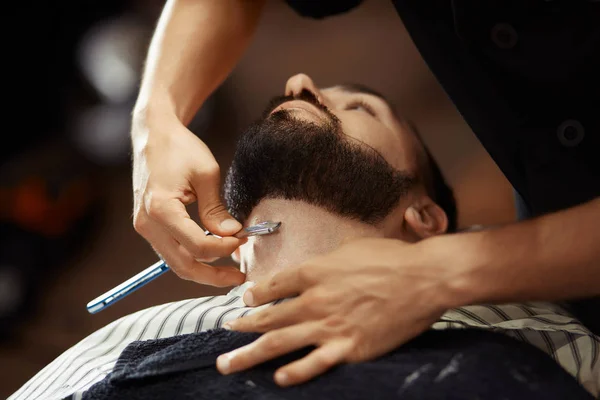
The Role of Aesthetics and Customer Experience
Creating an Inviting Atmosphere
The aesthetics of a barber shop and the overall customer experience play a crucial role in mastering barber shaving techniques. An inviting and well-designed space not only enhances the client’s comfort but also reflects the quality of service provided.
- Design and Decor: The decor of a barber shop should be a reflection of the professionalism and style of the services offered. Whether it’s a classic, vintage look or a more modern, minimalist style, the ambiance sets the tone for the customer’s experience.
- Comfort and Amenities: Comfortable seating, clean facilities, and thoughtful amenities like beverages or reading material can significantly enhance the customer experience.
Personalized Service: The Key to Client Satisfaction
- Personalized attention to each client is essential. Understanding their preferences and concerns, and tailoring the service accordingly, demonstrates a commitment to quality and customer care.
- Engaging conversation, attention to detail, and a friendly demeanor make the experience memorable and encourage repeat visits.
Aftercare: Soothing and Protecting the Skin
The Importance of Post-Shave Care
Aftercare is an integral part of the shaving process, vital in soothing and protecting the skin. This stage is crucial in mastering barber shaving techniques, as it ensures the longevity of the shave’s quality and the health of the skin.
Rinsing and Cooling
- After shaving, rinse the face with cool water to close the pores and soothe the skin. This helps to reduce redness and irritation.
Applying the Right Aftershave Products
- The type of aftershave product used can make a significant difference. For sensitive skin, opt for alcohol-free balms that hydrate and soothe. For normal skin, a light aftershave lotion or splash can refresh and tone the skin.
Moisturizing: The Final Step
- A good moisturizer is essential to hydrate and protect the skin post-shave. It helps to replenish any moisture lost during the shaving process and keeps the skin smooth and supple.
The Technique: Art and Precision Combined
The Essence of Skilled Shaving Technique
Mastering barber shaving techniques is a blend of art and precision. It’s about understanding the subtleties of the shave, which requires both technical skill and an artistic touch. This section delves into the key techniques that define expert barbering.
Preparation of the Skin and Beard
- Before the blade touches the skin, ensure that the skin and beard are thoroughly prepared. This means properly cleansed, softened, and lathered skin, ready for the shave.
The Right Angle and Pressure
- The angle at which the razor is held is crucial. A 30-degree angle is generally ideal for a straight razor, while safety razors have a built-in angle.
- Applying the right amount of pressure is essential. Too much can cause irritation or cuts, while too little won’t effectively cut the hair.
The Art of the Stroke
- Shaving with the grain (in the direction of hair growth) during the first pass minimizes skin irritation. Subsequent passes can go against the grain for a closer shave.
- Short, even strokes allow for more control and precision, reducing the risk of nicks and cuts.
Navigating the Face’s Contours
- Each face has its unique contours and challenges. Adjusting the blade’s angle and stroke length accordingly is key to a close and comfortable shave.
Choosing the Right Tools
The Significance of Selecting the Right Shaving Tools
In the journey of mastering barber shaving techniques, selecting the right tools is paramount. The tools a barber uses are not just instruments; they are extensions of their skill and expertise. The right tools can elevate a simple shave into a luxurious grooming experience.
Types of Razors: Finding the Perfect Fit
- Straight Razors: The classic choice for a traditional shave. They offer unparalleled precision and control, ideal for experienced barbers. When using a straight razor, ensure it’s well-maintained and sharp for the best results.
- Safety Razors: A great option for consistent, everyday shaves. They are easier to handle than straight razors and offer a close shave with less risk of nicks and cuts.
- Electric Razors: Best for quick, efficient shaves and for clients with sensitive skin. While they may not provide as close a shave as traditional razors, they excel in convenience and speed.
Shaving Brushes: More Than Just an Accessory
- A quality shaving brush is key in creating the perfect lather and lifting facial hair. Choose between synthetic, boar, or badger bristles, each offering a different experience.
- The brush not only applies shaving cream evenly but also gently exfoliates the skin, preparing it for a closer shave.
Sharpening and Maintenance: Keeping Tools in Top Shape
- Regular maintenance of tools is essential. For straight razors, this means honing and stropping to keep the blade sharp.
- For safety razors, changing the blades regularly is crucial to ensure a clean shave every time.
- Electric razors require cleaning and occasional blade replacement to maintain performance.
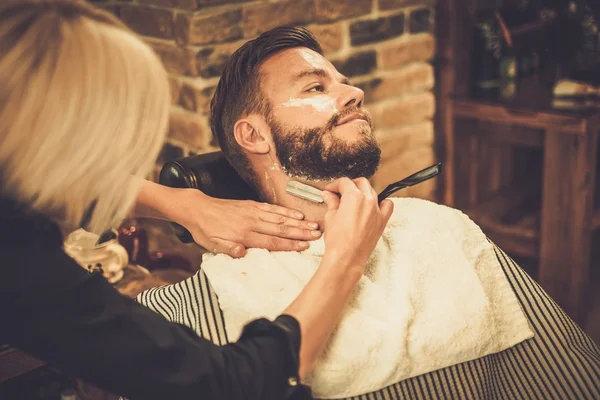
Preparation: The Foundation of a Great Shave
The Importance of Preparation in Shaving
The first step in achieving the perfect shave is preparation. This phase is crucial in the process of mastering barber shaving techniques, as it sets the stage for a comfortable, close, and safe shave. Proper preparation not only enhances the shaving experience but also protects the skin, reduces irritation, and ensures the best possible results.
Cleansing: The Starting Point
- Start with a clean face. Using a gentle cleanser helps remove dirt, oil, and dead skin, which can clog blades and hinder a smooth shave.
- Importance of warm water: Warm water opens up pores and softens hair, making it easier to cut. This can be achieved through a warm towel or a splash of warm water.
Softening the Beard: A Crucial Step
- The use of pre-shave oils and creams is essential in softening the beard. This step makes the hair more pliable and less resistant to the blade, reducing the risk of tugging and pulling.
- Application tips: Massage the pre-shave product into the beard in a circular motion, stimulating the hair follicles and further softening the hair.
Choosing the Right Shaving Cream
- The choice of shaving cream is critical. For different skin types, different formulations are recommended — for sensitive skin, a cream with aloe or glycerin can be soothing, while oilier skin might benefit from a more astringent cream.
- Application technique: Use a brush for even distribution and to lift the hairs away from the skin, preparing them for a closer shave.
The Art of Lathering
- Lathering is not just about applying the cream; it’s an art that can significantly enhance the shaving experience. A good lather provides a protective cushion between the blade and the skin.
- Technique: Use a shaving brush in a circular motion to create a rich, creamy lather. This also helps in further lifting the hair and exfoliating the skin.
Understanding Skin and Hair Types
Introduction to Skin and Hair Diversity
In the art of barbering, especially when it comes to perfecting shaving techniques, understanding the diversity of skin and hair types is fundamental. Each client presents a unique canvas – different skin sensitivities, hair textures, and growth patterns. Mastering the nuances of these variations is what sets expert barbers apart.
Skin Types: More Than Just Sensitive or Normal
Skin types vary greatly, and each type requires a specific approach for the ideal shave. The common types include:
- Normal Skin: Balanced and less prone to sensitivity, allowing for a straightforward shave.
- Sensitive Skin: Prone to irritation and razor burn, requiring extra care and the use of gentle products.
- Oily Skin: Characterized by excess sebum, often necessitating the use of astringent before shaving.
- Dry Skin: Prone to flakiness and irritation, needing pre-shave hydration and moisturizing post-shave products.
Hair Types: Understanding Texture and Growth
Hair texture and growth patterns significantly influence shaving techniques:
- Coarse Hair: Often found in thicker beards, requires sharp tools and a careful approach to prevent skin irritation.
- Fine Hair: Easier to shave but requires precision to avoid cuts.
- Curly/Wavy Hair: Prone to ingrown hairs; shaving in the direction of hair growth is crucial.
- Straight Hair: Generally straightforward but varies in density.
Catering to Individual Needs
Adapting to these skin and hair types is not just about comfort; it’s about providing a personalized experience that caters to individual grooming needs. This involves:
- Choosing the right products: Selecting shaving creams, oils, and aftershaves suitable for different skin types.
- Adjusting techniques: Modifying the angle of the blade, the direction of strokes, and the pressure applied based on hair type and growth patterns.
The History and Evolution of Shaving
Shaving: A Timeless Tradition
Shaving, a practice as old as civilization itself, has been a significant part of human grooming for thousands of years. Its evolution is not just a tale of changing styles and tools, but a reflection of cultural and societal shifts. When discussing the art of the perfect shave, understanding this rich history is essential for anyone mastering barber shaving techniques.
Ancient Beginnings
The journey begins in ancient Egypt, where shaving was not merely a grooming practice but a symbol of status and cleanliness. Egyptians, both men and women, would often shave their heads and faces, using tools made of bronze and other metals. This trend spread to Greece and Rome, where a clean-shaven face was associated with civility and refinement.
Middle Ages to Renaissance
In the Middle Ages, the beard regained popularity, often symbolizing wisdom and virility. However, by the Renaissance, the art of shaving re-emerged. Barbers of this era were skilled craftsmen, serving not just as groomers but as surgeons, hence the term ‘barber-surgeon’. Their tools and techniques became more refined, laying the groundwork for modern shaving methods.
The 18th to 20th Century: Innovation and Style
The 18th and 19th centuries witnessed significant advancements in shaving tools. The straight razor, an iconic symbol of traditional barbering, became widely used. In the 20th century, King C. Gillette revolutionized shaving with the safety razor, making home shaving convenient and safe. This period also saw the rise of electric razors, further diversifying shaving techniques.
Cultural Impact and Trends
Throughout history, shaving styles have often mirrored societal trends. For example, the clean-shaven look of the early 20th century represented the sleek, modern aesthetic of the time. The mid-20th century saw a mix of styles, from the conservative clean-shaven look to more rebellious beard styles in the ’60s and ’70s.
The Renaissance of Barbering
In recent decades, there’s been a resurgence in traditional barbering techniques. This renaissance has brought a renewed appreciation for the skill and artistry involved in a perfect shave. Today’s barbers combine time-honored methods with modern innovations, offering a grooming experience that pays homage to the rich history of shaving.
Staying Updated: Trends and Innovations in Shaving
Embracing New Techniques and Tools
In the ever-evolving world of barbering, staying updated with the latest trends and innovations is a vital aspect of mastering barber shaving techniques.
- Emerging Tools and Products: Keep abreast of the latest razors, blades, and shaving products entering the market. Trying out new tools can provide insights into improving shaving techniques and outcomes.
- Innovative Shaving Products: From new formulations of shaving creams to advanced aftershave treatments, being aware of and incorporating new products can enhance the shaving experience for clients.
Continued Education and Training
- Ongoing education is key in staying updated. Attending workshops, seminars, and trade shows helps in learning new techniques and understanding emerging trends in the industry.
- Networking with fellow professionals and exchanging knowledge and experiences is also valuable in staying informed and inspired.
Joining Our Barbering Program at The Spot Barber Academy
In conclusion, mastering the art of the perfect shave is a journey of continuous learning and practice. At The Spot Barber Academy, we offer a comprehensive barbering program that covers all these aspects and more. Our program is designed to equip aspiring barbers with the skills, knowledge, and confidence to excel in this rewarding profession. Join us to embark on your journey to mastering barber techniques and elevating your craft to the next level.
Closing Thoughts
The art of shaving is a timeless skill that combines tradition, precision, and personal care. By mastering these techniques, barbers not only enhance their professional skills but also preserve a rich heritage of men’s grooming. At The Spot Barber Academy, we are committed to nurturing this art and invite you to be a part of our vibrant community.

